Arma Hobby 1/48 Sea Hurricane IIc
The Hurricane Mark II was powered by a Merlin XX and had the wing center sections strengthened. Hawker had experimented with improving the fighter's armament by fitting cannons. Their first experiments used two 20 mm Oerlikon cannons in pods, one under each wing, but the extra weight and drag seriously compromised the aircraft's performance and maneuverability; the limited amount of ammunition carried coupled with the frequent stoppages suffered by the drum-fed guns was unsatisfactory. A more reliable fit was made with four 20 mm Hispano Mk II cannon, two in each wing, but the weight was enough to seriously reduce performance. The Hispanos were designed for a rigid, engine based mounting and it was quickly found that the wings flexing in flight led to problems with the weapons twisting in their mounts as they fired, which caused gun jamming through misaligned shells. Changes made both to the Hispanos and to their mountings cured this problem.
The cannon-armed Hurricane IIc entered service during the late spring and summer of 1941, primarily as a fighter-bomber. The Sea Hurricane IIc version equipped with catapult spools, an arrester hook and full naval avionics appeared in early 1942, with 400 aircraft converted; they were used on fleet and escort carriers. The Merlin XX engine on the Sea Hurricane generated 1,460 hp at 6,250 feet and 1,435 hp at 11,000 feet. Top speed was 322 mph at 13,500 feet and 342 mph at 22,000 feet.
Sub-Lieutenant Allen Burgham volunteered for military service in his native New Zealand in 1940, joining the Royal New Zealand Navy Volunteer Reserve at age 19, He spent time in both England and Canada, learning to fly as a member of the Commonwealth Air Training Program. On December 18, 1942, he joined 804 Squadron, an operational front line squadron with a prestigious reputation and a top flight combat record.
At the time, he had 93.25 hours of flight in a dual control single engine aircraft, 175 hours of solo flight in single engine aircraft and a further 14.40 hours of flight in night time conditions in single engine aircraft. This was more or less the normal required training for “rookie” pilots joining operational squadrons in 1942.
Burgham was the most inexperienced of 804's pilots. 804 was an intimidating squadron for a rookie to join. It was staffed with very experienced senior pilots, all of whom had seen air-to-air and air-to-sea and ground combat. 804 had the distinction of providing pilots for the CAM (Catapult Armed Merchant) ships. 804's Hurricane 1s were being replaced by Sea-Hurricane IIc's.
It is possible that “Nicki” was delivered in December of 1942 or January of 1943. Burgham's log does not mention NF672 but 804 had a fleet of 12 Hurricane IIc's and at some time “Nicki” (NF 672) was one of them.
In June of 1943, 804 was ordered to go on a conversion course to be trained to fly Hellcats. After two weeks 804 was broken up and pilots were distributed among various squadrons. It is a testament to the elite status of this squadron that most 804 squadron pilots went to senior commands, either training squadrons or operational squadrons.
In July 1943, Burgham joined 835 Squadron's Fighter Component. As Senior Pilot and Commander of the Fighter Component he would be Mentioned in Dispatches and win the Distinguished Service Cross. A number of Hurricane IIc's from 804, also arrived in 835; “Nicki”, NF 672, was one of them. The Hurricanes flew with the Swordfish bombers to serve as U-boat strafers. They would dive quickly on surfaced U-boats and strafe them to silence their AA armament while the slow Swordfish attacked with depth charges or rocket projectiles. The fighters were also used against the Fw-200s, Ju-290s, and Ju-88s shadowing and attacking the convoys.
The squadron transferred to the escort carrier HMS Nairana on December 31 1943. They were aboard Nairana, on Atlantic convoy duties and on the Gibraltar Run for most of 1944.
The squadron also served in 1944 with a successful submarine Hunter-Killer Group in the North Atlantic under the overall command of Captain Frederick Walker.
On the Murmansk run, Squadron pilots faced the most dangerous flying conditions of the war to attack two U-boats and shoot down four enemy aircraft in the Arctic. The aging Sea Hurricanes were replaced by Grumman Wildcat Mk.VIs in September.
Even though camouflage was standardized under Admiralty rules, the suggestion of 835's Commander Edgar Bibby, DSO, that the Hurricanes be painted off-white met with universal approval among the pilots. White, as opposed to the regulation FAA camouflage of Extra-Dark Sea Gray and Slate Gray would hide the planes against the white of the clouds in the Atlantic. This was successful and on more than one occasion they were able to close right in on their target without being seen.
HMS Nairana's flight deck was only 495 feet long and 60 feet wide, compared to the Kaiser-built CVE's with a deck 450 feet long and 102 feet wide. Nairana had no deck room for pilot error or weather-related landing disaster. Pilots had to land dead center. A dozen feet to the left or right or a few feet too low or high and a pilot was going to make the kind of mess one would not easily walk away from. This increased the stress of the pilots after months of flying from her in outrageous weather and light conditions in the arctic.
Nairana and 835 demonstrated the most difficult feats of flying in the most severe weather and battle circumstances of the entire war. They proved that Navy pilots could operate in the severe conditions of the Arctic Ocean. During one arctic storm in 1945, the wind into which they flew was measured at over 70 knots and gusting to over 100 knots. This caused the stern to corkscrew and pitch up to fifty feet and roll at angles beyond 35 degrees as it moved through waves over 40 feet high.
As Dick Mallet, Nairana's Operations Officer wrote years later:
“I was so haunted by memories of what we had all been through. My impression is that for more than a year 835 was continually flying in the most appalling conditions, and close to the limits of possibility. There was a tremendous esprit de corps in the squadron, but towards the end everyone became operationally fatigued. Not round the bend; just totally bloody exhausted.”
Although “Nicki” was not Burgham's personal plane, she was often the fighter he flew. In January 1944, Nairana and 835 joined Captain Frederick John Walker and his famous 2nd Escort Group on a hunter-killer trip that resulted in the sinking of 7 U-boats.
If incidents against U-boats or bombers weren't exhausting enough deck landings and crashes took their toll; Burgham survived six crashes in all. On March 2, Burgham crashed NF 700 breaking her back catching the oleo tail wheel and hitting the round down. The ship was pitching wildly and the round down rose up thirty feet just as the Batsman gave the signal to cut his engine.
During May 1944, Burgham flew “Nicki” periodically, frequently being scrambled after enemy bombers. Then on May 25 Burgham was in Sea Hurricane JS298 when he and Richardson were launched to intercept a Ju-290. “The Fighter Direction Officer gave us a change of course onto a reciprocal, thinking we had passed the target. I turned to starboard when Charles, who by this time had been obscured by my wing, shouted “Tally Ho”, and whipped into a turn to Port. Not seeing the target or knowing its relative position, I tightened my turn and saw a Ju-290 diving for cloud, being chased by Richardson, firing at its disappearing bulk. The 290 soon disappeared from the screen and, as the light was fast fading, we were directed back to the ship.
Burgham landed with a few extra knots in the poor light. “This proved to be the wrong decision as I floated up the deck, drifted to starboard and caught the trip wire. The wire broke with the result that my wing hit the starboard barrier stantion and one round was fired from each of the starboard cannon. The shells penetrated the bridge and knocked the Commander Flying off his perch.”
The morning of May 26, Bugham and Richardson were scramled at 0730 to intercept another Ju-290. Burgham was flying “Nicki.” “Some distance out on the convoy's starboard bow, we saw a Ju-290 which must have just descended to sea level to escape convoy detection. We were at 2,000 or 3,000 feet and decided to separate so that we could attack him from opposite sides. He soon saw us and turned away, putting Richardson in a position to attack first. As he committed himself to a diving attack the Ju-290 took the usual evasive action by turning towards him, making it difficult for him to get a bead on it. This meant that the 290 was turning away from me and put me in an excellent position to attack. As I approached, I could see Richardson closing in astern in a very tight turn, when his wing tip hit a wave and he exploded in a ball of oily flame. As the enemy began a turn towards me, I came within range, opened fire and began to see pieces falling from the aircraft which climbed a little, then nosed over into the sea, where it exploded. I checked for survivors, then went to circle the oil slick where Charles' Hurricane had gone in. I could see what appeared to be his “Mae West” but no sign of life. I circled the site until a Swordfish arrived to home-in an escort vessel. As I circled Richardson's oil patch I began to reflect on what had all happened so quickly and realized that the flashes emerging from various parts of the enemy aircraft, that I had thought nothing of at the time, had actually been muzzle flashes from its guns! It made me realize that this was a little different from all the dummy attacks we used to make on poor innocent aircraft around the skies of the U.K. Before I returned to Nairana I dived “Nicki” on the remains of the Ju-290 to alert Swordfish to its position.
Later that day, Sub-Lieutenants Mearns and Wallis were scrambled and intercepted a pair of Ju-290s. They selected individual targets. Mearns destroyed his and Wallis scored hits on his, but it managed to elude them and escaped. A note on the combat report says that German radio transmittals from Ushant indicated that a damaged Ju-290 went down into the sea on the way back to base.
For a few more weeks and months the convoy service continued unabated. By October the war changed for 835. If they had thought that the North Atlantic war was tough, things were to become a whole lot tougher. The Hurricanes were flown off Nairana for the last time; the last operational Hurricanes of the war. “Nicki” was not among them as she had been damaged in a barrier crash-landing while being flown by Burgham's Number 2.
835 Squadron made their reputation in the Arctic. They literally were worked to exhaustion. Casualties for the squadron were high. They won more than their share of Distinguished Service Crosses. Courts of Inquiry and near mutiny followed as part of the story. But their contribution is unquestioned and the heroism is acknowledged in history. “Nicki” was part of their story.
THE KIT
When Arma Hobby announced this past spring that they were going to release a Hurricane IIc in 1/48 this was well-received in light of their superb 1/72 Hurricane series that are considered the best kits in that scale.
The kit does not disappoint. Arma has accomplished the incredible in creating surface detail that includes in-scale raised rivets - a major part of the Hurricane, as I discovered being around the two that were guests at Planes of Fame 20 years ago. The raised and flush detail is exactly right. On can confidently call this the best, most accurate kit of a Hurricane in any scale.
Decals are included for three different Hurricane IIc. These are excellent and I can report they go down over the surface detail without trouble with Solvaset.
CONSTRUCTION
Arma's instruction sheets are among the best from any company and a modeler cannot go wrong following them with a near-guaranteed result of an excellent model. There are no problems, so long as the sprue attachments are carefully removed from the mating surfaces.
When I saw that the lower rear of the fuselage was separate - a sure promise of a Sea Hurricane to come - I decided to see if the Sea Hurricane lower fuselage of the Airfix kit would fit. It does, with the proviso that the forward edge is cut back 1/16 inch. With that, it is a drop fit conversion. I decided I would make “Nicki,” which I had done with a Hasegawa kit 20-plus years ago.
COLORS & MARKINGS
“Nicki” is the best example I know of to demonstrate the truth that many “researchers” are more muddler than modeler.
Back in 1973, when Airfix first released their 1/24 Hurricane, they also released a book on how to build it, and the different results that were possible. A Very Senior British Modeler did a modification of the kit to a Sea Hurricane IIc, and did it as “Nicki.” He declared that the airplane was overall white, despite the fact that the only photos of the airplane clearly show that this is incorrect. However, seniority won the day and for the next 20 years, models of “Nicki” were done all-white.
Around the turn of the century, someone decided to actually look at the photos and see what was there, and discovered that the white paint was only on the upper surfaces, and wrapped around the leading edge of the wings and the nose cowling. Then someone found a photo of another Sea Hurricane IIc standing on its nose, and noted the remains of D-Day stripes on the lower wing. The photo was declared to be an 835 airplane despite the fact it was in the standard FAA camouflage; as noted in the article above, the 835 airplanes were in white camouflage during all of 1944, and never served anywhere near the Normandy invasion.
Nevertheless, this became The Standard For “Nicki” and Hasegawa cemented it with a limited release Sea Hurricane IIc kit in the “Nicki” markings. Except they weren't! Somewhere along the line, another “hex-spurt” had declared that Nicki's serial was NF691 with the identification letters “7-N.” NF700 was also proposed as an alternative serial.
Allow me to point out that it took me all of 10 minutes with Der Google to discover the article published 20 years ago in the now-defunct “Navismagazine,” an interview by Burgham's son with his father about his exploits.
According to Burgham, “NF 700 was the aircraft whose back I broke by hitting the rundown with the tail wheel on March 2, 1944. NF672 is called “Nicki”. My records indicate that 7N was the identifier of NF691. NF672 was labeled 7K and was the aircraft I was flying when I shot down a Junkers 290 in May 1944.”
Thus, after I applied the overall white upper color in a “ragged” manner as if painted over other camouflage - as is shown in the photos everyone keeps misidentifying - I applied the kit decals for the national markings. I used the decals from Aeromaster 48-193 “Hurricanes at War Part 1" which has Nicki individual markings. I modified the “N” decal into a “K.” The “Royal Navy” and serial - which can be seen in photos - were not included on the sheet, so I pieced that together off other sheets in the decal dungeon.
I also painted the landing gear and gear well in Sky. Those parts were usually painted with aluminum lacquer on Hurricanes, but the aircraft modified to Sea Hurricanes had the additional paint there to better preserve the airplane against saltwater corrosion while operating aboard ship.
The prop and landing gear was attached and the canopy unmasked and posed in the open position.
CONCLUSIONS
The Arma Hurricane kit has the parts to make a tropical fighter bomber - desert intake, bomb rack and bombs - so if you have aftermarket sheets available, you do not have to wait for that option to be released (later this month). If you have an Airfix Hurricane I, you don't have to wait until later this year to do a Sea Hurricane.
This kit is hands down the best Hurricane in any scale. Arma will release other Hurricane sub-types in months to come. The kit should present no problems to anyone with a few successful projects under their belt. Follow the instructions, take care in cleaning off sprue nubs and take your time assembling everything right, and you will have an excellent model to put on your shelves.
Highly, highly recommended to all Hurricane fans. (Review kit courtesy of all you book buyers)
UPDATE: Xtradecal has just released sheet X48240 - "Sea Hurricane IIc Collection" - which finally gets "Nicki" right, as well as three other 835 Squadron Sea Hurricane IIc's. Looks like somebody else finally sat down and did the research like I did. Since Arma's kit will obviously by its design eventually include a Sea Hurricane IIc, probably sooner rather than later from Arma's release schedule of the kit so far, this is a sheet you may want to get. You have four white Sea Hurricanes and they all look right. (However, the painting instructions are wrong because they don't show the entire nose white - pay attention to that!)
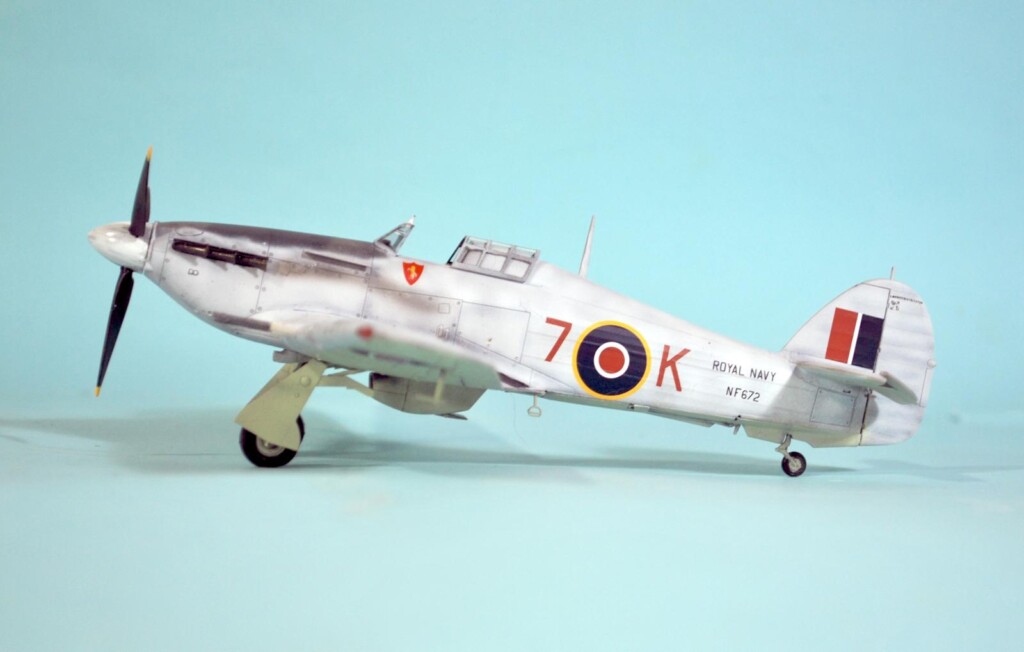
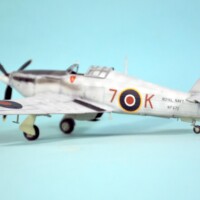
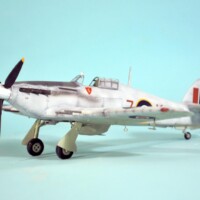
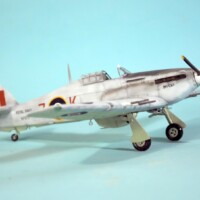
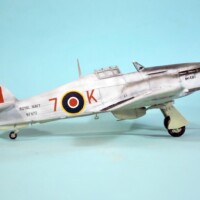
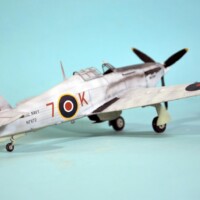

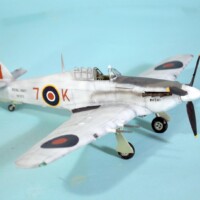
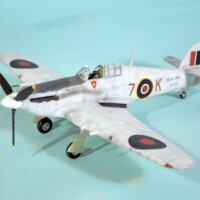
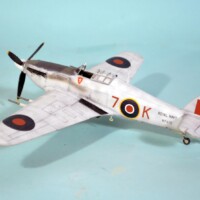

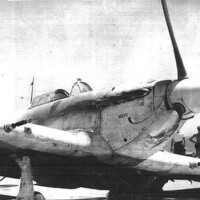

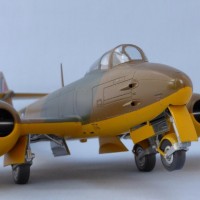
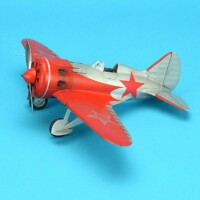

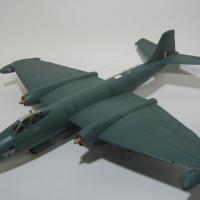
Excellent model and write up, Tom. It’s amazing what 835 Sq. went through. BTW, I just received my Eduard FM-2. Great article. More information that I was unaware of.
Thanks. I really appreciate "knowledgeable compliments."
Awesome result and ditto article, Tom!
Really great looking Hurricane, Tom @tcinla
Even supported by a nice to read and very informative article, thanks for sharing.
I do like the looks of this Hurricane in white, especially with this weathering you added, exactly as shown on the real aircraft.
Definitely a kit added to my wishlist.
@tcinla - Absolutely amazing Headline Tom. I truly appreciate the amount of time you must put into your research. Fantastic paint and weathering as well!
For me, as an historian, the research is half the fun.
Model looks great, but what about "The rest of the story"?
Great work on the this @tcinla I'd never seen the white paint scheme on a Hurricane before this post and it is really sharp. Excellent weathering and finish- this kit looks like a winner. I wasn't all that impressed with the Airfix offering so I'll have to file this away to try in the future.
The Airfix kit is really good. Trust me. Buy and build in confidence.
Great Hurricane in an unusual paint scheme, Tom (@tcinla). It was fun to follow your build. Well done.
Excellent work on the Hurricane and very interesting and detailed history.
Great story and model, Tom. You had my imagination running with this story. I hope you have a plan to include in another book. I’ll buy it.
I'm starting to get an intimation of another one. Thanks for the confirmation it's a good idea.
Great looking Hurricane and an informative write-up.
I really love this model Tom it is by far one of my favourite schemes on RAF Hurricane the white just suits the airframe for me very well made and great reading too I never knew any details about it
I had this as a kid here in Uk in 80s we had great model shops and I found this as 1/48 kit hanging in the shop pre made I asked to buy it and then saved my money until I could go in and get it I remember it being well made and painted very well apart from that I have no idea if it had DDay undersides iD or antiglare section in black or green but it was super model so to see it again your edition is Wonderfull with some facts to boot I now have the die cast Corgi model which is ok but as you know we can make them look better than corgi can that's what got me back into modelling as an adult and very happy I started again great model tom thanks for sharing
Look pritty cool! Very nice painting!
I have to agree that the Airfix Hurricane kits are excellent and are reasonably priced. The Arma kit is what the Fan Boys dream of. The nuts and bolts are all there, the surface details or textures (fabric) are state of the art. The parts break down is well thought out. The subject matter compliments the Airfix version. The cannon armed version vs the .303s. You pay a little more. Like comparing a good beer vs a cognac. Either way a great read and some research in correcting the paint scheme TC. As always.
This is a gorgeous build, Tom @tcinla. I love the white scheme - i am sure it was not easy, but you did a fantastic job, i love the weathering. The slightly worn look is great!
Interesting article and a lovely Hurricane in a livery one does not see very often.
Thanks for sharing, Tom @tincla
Great read and superb model based on what you've said. I have one on order thanks to you, TC @tcinla.
Great looking Sea Hurricane and a great read!
Excellent build, Tom.
Beautiful build - what a cool scheme for a Hurricane - and a great article! Love it.
Beautiful model and fascinating history - those boys earned their flight pay!
Tom Cleaver (@tcinla)
With so many article hitting the headlines recently, it very easy to miss something. I missed this one, and by chance just noticed it now.
Excellent in all aspects... thanks for making my wallet take another hit ! 😉
I can see myself getting a few of these kits too. Boy are we spoiled or what ? What a great time to be a model builder..
Thanks for sharing this one with us.